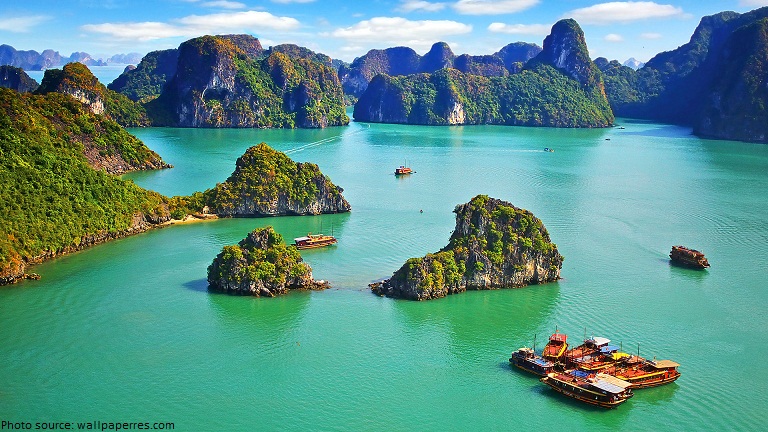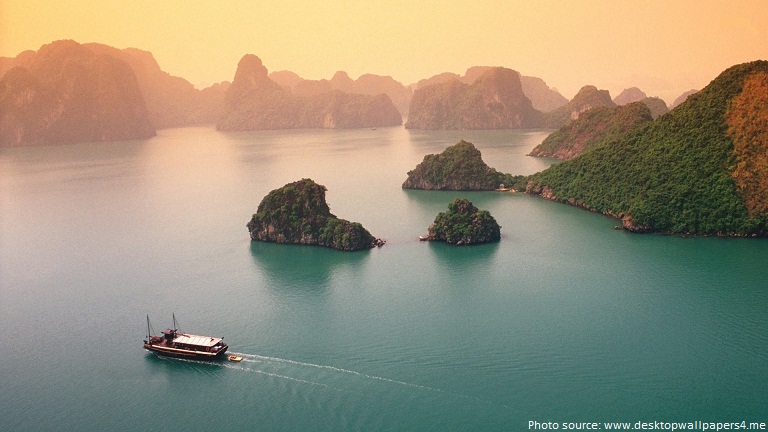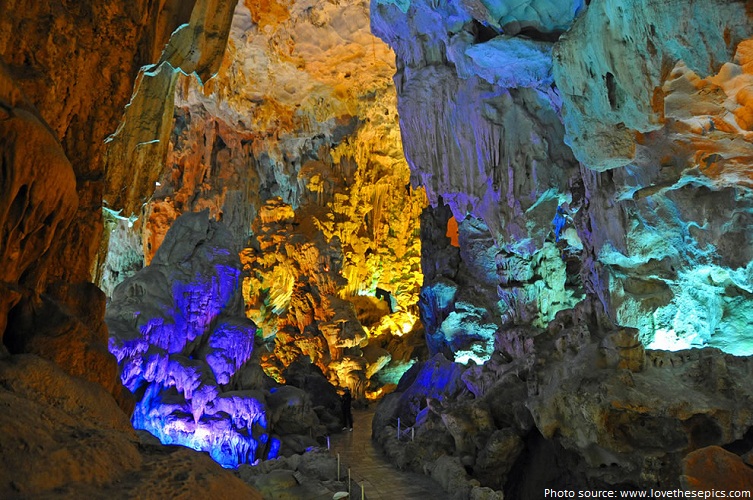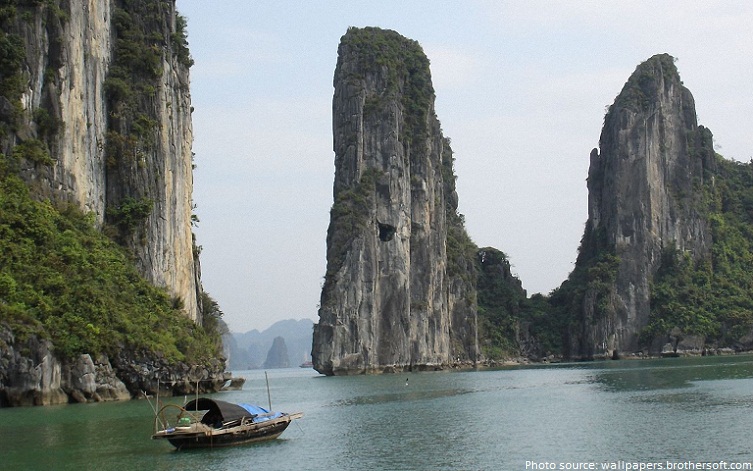Halong Bay is an area of extraordinary natural beauty, situated in Vietnam’s Quang Ninh Province, close to the Chinese border.
Comprised of a multitude of limestone islands and islets rising from the sea, in a variety of sizes and shapes and presenting picturesque, unspoiled nature, Halong Bay is a spectacular seascape sculpted by nature.
Halong Bay has an area of around 1,553 square kilometers (600 square miles), including 1,960 islands and islets, most of which are limestone.
The bay extends 120 kilometers (74 miles) along the coastline.
Most of the islands and islets in Halong Bay are limestone.
The limestone in this bay has gone through 500 million years of formation in different conditions and environments.
Another exceptional geological feature of Halong Bay is the number of limestone islands which have caves and grottoes within them.
Thien Cung Grotto (Heavenly Cave) is situated on Dau Go Island (Wooden Stakes Island) in the southwestern Halong Bay. Thien Cung Grotto is at the height of 25 meters above the sea level.
The grottos in Halong Bay are some of the most spectacular in the world. Many are open to visitors but a number of others are not in an attempt to preserve their integrity.
Less than half of the islands have been named. Many of the names come from the shape of the islands themselves, such as Mai Nha Island (roof) and Voi Island (elephant).
With heights ranging from 50-100 meters (160-330 feet) and a height-to-width ratio of about 6:1, the majority of these karst pinnacles and islets have sheer, vertical cliffs.
The sea in Halong Bay is generally less than 10 meters (33 feet) deep and boasts a rich biodiversity of about 1,000 species of marine animals.
There are 450 different mollusks and 200 different species of fish in Halong Bay.
Over 160 species of coral have been identified.
Some of the wildlife found on the islands include: monkeys, deer, mink, squirrels, birds, lizards, and even antelopes.
The Ministry of Culture, Sports and Tourism of Vietnam listed Halong Bay in the National Relics and Landscapes publication in 1962.
It is classified as both a World Heritage Site by UNESCO in 1994, and as one of the New 7 Wonders of Nature in 2012.

Halong Bay means ‘where the dragon descends into the sea‘. Legend states that gods sent dragons, who dropped jewels and jade from their mouths into the bay, creating the islands.
Nguyen Tai described Ha Long Bay in a poem written 500 years ago, calling it a ‘rock wonder in the sky’.
The property retains a high level of naturalness, and despite its long history of human use, is not seriously degraded.
Archeological evidence suggests humans may have inhabited the area in and around Halong Bay for as long as 18,000 years.




Comments are closed.